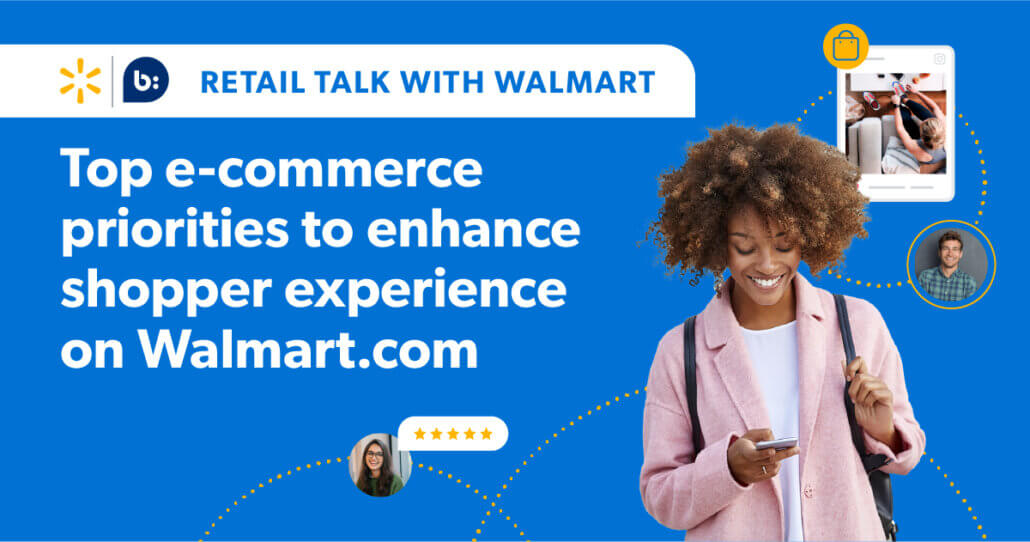January 28, 2022
When you were a kid, odds are this question cropped up on the playground: If you could have just one superpower, what would it be?
Like most kids, you probably went with one of the big hitters like flying, super speed, or incredible strength. Or my own preference, the ability to teleport anywhere at anytime. But as an e-commerce manager or business owner, there’d be nothing more valuable than the ability to read people’s minds. Imagine having instant access to consumer insights that tell you exactly what your audience loves, hates, and everything in between.
Fortunately, there’s easy ways to acquire and implement these consumer insights, and you don’t need superpowers to do it. To get started, simply go through our nine expert tips on how to use consumer insights to improve your marketing strategy. First, though, let’s get clear on what consumer insights are and how people have typically gathered that information in the past.
What are consumer insights?
Consumer insights are the interpretations of consumer behaviors that help businesses understand how their target audience thinks, feels, and engages with their brand. This information can come in many forms. For example, you could aggregate bunches of behavioral data from Google Analytics to find trends in demographics. Or you could learn how your ideal buyer persona feels about your niche by simply combing through competitors’ reviews.
At the end of the day, any piece of information that gets you closer to understanding how your target audience feels about your brand or products is a consumer insight.
And these insights are invaluable for improving your marketing strategies.
Once you understand the kinds of things your audience loves, you can give them more of it. This leads to deeper engagement, stronger customer relationships, and higher conversions. But you might be wondering, “with everything I need to get done by yesterday, how would I even gather consumer insights in the first place?”
It’s a great question, especially since that term has evolved with all the technical advancements developed over the past two decades. Before digital marketing tools were readily available for small-to mid-sized business owners, gathering consumer insights was fairly tedious. Common methodologies included:
- Focus groups
- One-on-one interviews
- Telephone surveys
- Paper comment cards
These strategies are still valuable for larger businesses with big marketing teams, but let’s be honest: they’re not ideal for the majority of e-commerce brands. They require too much time, attention, and resources that many business owners simply don’t have. Fortunately, newer methods have popped up in recent years that allow you to gather and implement customer insights, including:
- Social media interactions
- Competitor analysis insights
- In-depth behavioral data on your audience (with free tools like Google Analytics)
Plus, there’s tons of automated tools with advanced functionality that allow you to gather consumer insights and make it easy to put what you learn into action. But if you still need a bit of help, don’t worry. We’re about to dive into nine tried and true techniques for using consumer insights to improve your marketing initiatives.
9 ways to use consumer insights to improve your marketing
Understanding your audience is important for increasing conversions and sales but only if you actually use the information you collect. We’ll look at how you can apply user insights to improve your marketing efforts, but feel free to jump to the section that you find most valuable:
Insights from social media
Social media is the perfect place to engage with your audience in real time. As a result, it’s one of your best resources for finding and using consumer insights to improve your marketing efforts.
1. Bring your products to more targeted communities
When people comment on your brand, you can click on their profile to learn more about this type of customer. One thing to look out for is the communities that this person engages with. But the world of e-commerce moves fast, and it’d be prohibitively time-consuming to research your customers’ social accounts manually.
That’s where the right social listening tool steps onto the scene.
Social listening tools allow you to see where your target audience is hanging out online and what they’re saying there. Once you figure out where your audience base is spending their time, you can bring your products directly to those groups. This gives you access to large communities full of warm leads.
Plus, many tools have also reached a point where they’re practically “plug n’ play.” That means you don’t need any technical skills or coding experience to operate them. Some popular social listening tools for gathering consumer insights include:
- SparkToro: A new(ish) tool that helps you identify what types of content (blogs, podcasts, YouTube channels, etc.) your customer base consumes
- Sprout Social: A social management platform with a suite of tools to help with your social media strategy and uncover audience trends
- Mention: A freemium tool that helps you listen to the conversations your audience is having about your brand across social media channels
- Bazaarvoice Social Publishing: An AI-driven solution to help you understand what social content your audience loves
Once you know where your audience is spending their time, leverage the opportunity to bring your products to them.
2. Build more attractive contests, offers, and lead magnets
As you’re learning what your audience loves, you can transform that knowledge into useful contest prizes or lead magnets. This gives you a head start in creating the kind of content and offers that will attract your ideal audience.
One of the best examples of this comes from WizardPins, a manufacturer of custom pins, coins, keychains, and more. They started holding contests on social media and used an enamel pin worth about $10 as the prize. From that first contest, WizardPins generated over 700 followers.
What did this level of growth tell them? Their audience really engages with these pins as a free prize, providing WizardPins with a more affordable strategy for growth than conventional methods (such as paid ads). And the contest wasn’t difficult to create. It looked like this:
Over the next 18 months, WizardPins held 40 contests and generated 30k followers. If you’re doing the math, that’s a growth of 30,000 followers for only $400. And it’s all thanks to WizardPins’ watchful attention to what their audience was engaging with.
3. Shift your messaging based on changing attitudes or beliefs
Consumers don’t live in a vacuum, and their thoughts/attitudes change over time. Listen to the conversations happening on social media to keep up with your audience’s attitudes toward your niche. Then adapt your messaging accordingly.
For example, according to Digimind, a U.S.-based liquor company had a line of Russian Vodka in their portfolio. But back in 2016, Russia was creating negative sentiments among North American users on social media because of their involvement with the presidential election. So they pivoted their message. They built a marketing campaign with the following slogan: “Made in America. But we would be happy to talk about our ties with Russia under oath.”
And that shift paid off. As a result, they increased their share-of-voice by 5–10x. Had this liquor company neglected their consumer research, they would have missed out on that growth altogether.
Insights from competitor analysis
Consumer insights give you a huge edge over the competition. When you see how your audience reacts to your competitors, you can work to improve your product or make your offers more enticing.
4. Improve your products based on negative competitor reviews
If you listen, you’ll learn a lot from consumers – even if they aren’t your consumers (…yet 😉). Read your competitors’ negative reviews to see where improvements could be made to your product.
For instance, here’s a product for a build-it-yourself remote control car for kids by GAMZOO:
Right away, you can tell they have a BIG competitor: LEGO (a better-known kid’s company in this niche). And if LEGO’s marketing team wanted to get a competitive advantage, they could simply read through the negative reviews for this product to learn what their audience values. In this case, we see a trend among 2-, 3-, and 4-star reviews that this product is difficult to build. Even for the recommended age:
Negative reviews from competitors unveil pain points about your audience that you can use to improve your product line. With this information, LEGO can emphasize how their instructions are simple to follow, can be downloaded online, and encourage kids to learn autonomously. In fact, they’ve built an entire resource hub with instructional resources to fix a clear pain point felt by their (and their competitors’) audience.
5. Learn from your competitors’ content marketing and social strategies
Another great way to get consumer insights is to learn how your competitors are running their content marketing strategies. Read through blog posts, social posts, or sign up to your competitors’ email lists. This will give you an idea of the types of content your competitors are using to successfully attract your target audience. Which is a bit like giving you a cheat sheet to a winning strategy. If it’s working for them, after all, why couldn’t it work for you?
When you’ve identified the types of content your competitors are publishing, begin creating similar (but better) content to improve your content marketing efforts.
One of the best examples of this in the real world is how companies compete for rankings on search engines like Google. Using a tool like Ahrefs or Similarweb, you can see what blog posts or web pages your competitors are ranking for. Then you can analyze the post’s or page’s structure to figure out how to improve on that content and steal their rankings.
So let’s say you sold dog collars and wanted to see what kind of content your biggest competitor, Ruffwear, is putting out there. You could pop their domain into a tool like Similarweb to see tons of information, like traffic, volume, and position:
Now you know that Ruffwear ranks in the second position for the “dog booties” keyword. And you also know that this term has a volume of 9,460 people who search for that phrase per month.
Now, you can head to Google and find the article by typing in the keyword “dog booties” and locating your competitor in the results:
Then analyze that content to see how they’re positioning this product and look for ways that you can make a better version of that page or post. And since you’re not starting totally from scratch, you have a head start on creating more engaging content.
This is just one example of how you can spy on your competitors’ content marketing strategies, though there are many others. The key is to learn what’s working for your competitors, use that as your new baseline for content creation, and build something better than what’s already out there.
6. Up your PPC game using your competitors’ paid advertising strategies
While it can be difficult for businesses to determine the concrete value of a single blog post or page, paid advertising is more cut and dry. Finding a company that’s spending money on targeted keywords or audience segments gives you a safe bet that this strategy is paying off. (After all, your competitors wouldn’t be investing money into those long-term ads if it weren’t profitable).
But the question remains, how can you tell which ads your competitors are running or which keywords they’re paying for?
The good news is that some advertising platforms, like Facebook and Twitter, have become more transparent regarding who’s paying for ad space on those channels. For example, Facebook created an Ad Library in 2019. This lets you type a keyword into the search bar and see which competitors are running related ads. You’ll see:
- How long the ad has been running
- Which platforms it has been running on
- The advertisement ID
- The company running the ads just below
Pro Tip: The only way spying on your competitions’ paid ad strategies pays off is if you can identify their most successful campaigns to create better ads for the same keywords. However, you don’t have access to how well the ad performs, so what should you do?
In this case, a good option is to scroll through Facebook Ad Library results and look for active campaigns that have been running for several months. This is a good indication that the ad is bringing in more revenue than it’s costing. Otherwise, your competitor likely would have turned the advertisement off.
Another option is to use an advanced tool like SpyFu or Semrush to check your competitors’ SEO and PPC strategies. You’ll see what keywords they’re spending money on with paid ads, which platforms they’re using, and whether or not the campaigns are still active.
Again, this will tell you that these topics/words are very relevant to your audience. Then, it’s your job to analyze the advertisement, figure out why it’s resonating with your audience, and build a more enticing ad. But since you’re starting with a competitor’s strategy, you’ll skip a lot of the trial and error associated with PPC advertising.
Insights from your audience analysis
So far, we’ve covered how you can use consumer insights from social media and your competitors’ marketing strategies. Now, let’s turn our focus inward by looking at how to use consumer insights you gather from your audience.
7. Engage with your target audience in their own words
Many companies scroll through user reviews, social media feeds, and blog comments to understand how their audience thinks and feels about their brand. If you’re working on a budget, you can do this manually by looking at reviews for your products. The cosmetic company Vichy, for example, could learn how people describe their facial cream by reading reviews. They’d see lots of terms repeatedly cropping up, like “light,” “not heavy,” and “silky.”
Okay, great. But what do you do with that information once you have it?
Learn the exact phrases customers use to describe your brand. Then, you can reuse those phrases in your copywriting. It’s like having access to a cheat sheet telling you how to connect with your audience. Returning to Vichy, they might read through the reviews above and create a landing page for their facial cream with the following headline:
“Silky smooth application for that light and bright feeling all day.”
This level of personalization in copywriting has been proven to boost conversions. Spend some time reading through your user reviews and start a spreadsheet to note common words or phrases your customers use. It’ll only take a few hours of your time, but it will be worth the higher conversion rates.
8. Ideate content based on engagement (and double down on your winners)
Pay special attention to which types of content are getting the most engagement. To be clear, the term “engagement” is vague, and it’s measured differently across marketing channels or niche-specific KPIs.
Tracking website engagement, for example, might include measuring things like:
- User sessions
- Time on page
- Bounce rates
- Conversions from that page
But measuring engagement with social media would include other metrics, such as:
- Likes
- Shares
- Comments
- Follower growth rate
Email marketing and pay-per-click (PPC) marketing channels are no exceptions. Each will have a different measurement for engagement that you’ll need to get clear on. Once you’ve defined those KPIs, you can isolate which platform you want to optimize. From there, look for trends among the posts that get the highest engagement rates based on how you calculate them.
The good news is that when you find something is working well, you can double down on that strategy. Dollar Shave Club did this when they created their first video back in 2012. The CEO paid $4,500 to have the video created, and it was initially used as an advertisement. The video went viral, meaning it wasn’t just viewed in ad placements. Instead, the video was organically shared with millions of people, bringing in 12,000 orders for their product in the first two days.
Since then, they’ve created more videos that get lots of engagement, including the 2018 “Get Ready” and the 2019 “Dad Bod” campaigns. This blend of entertainment/advertising has led to Dollar Shave Club’s $1 billion market value. It also serves as a great lesson to run with the types of content your consumers are engaging with the most.
9. Leverage your negative reviews to reduce churn
If you see a negative review about your brand, consider it a learning experience. Then, turn it into something positive. Identify what this unsatisfied customer was missing and see if you can fill the gap. In many cases, if one user is feeling a certain way about your products, others are, too.
You can do this manually or use tools designed to gather consumer insights based on your customer reviews. T2, for example, is an international tea manufacturer and distributor. They used Bazaarvoice to increase the number of user reviews they received. After analyzing what their customers were saying, a trend emerged: consumers were missing a type of tea that had been discontinued.
So they brought it back with massive success.
T2 was also able to gather this insight from user-generated content (UGC) in the form of reviews, testimonials, and customer photos from social media. Along with bringing their former product back, they incorporated more of this UGC into their marketing strategies. As a result, they saw a 75% increase in conversions from their Australian site, a 174% increase in conversions from their U.S. site, and a 77% percent increase in conversions from their European site. All websites saw a significant increase in sales.
If intrigued by this, you can see exactly how they did it by checking out their story here.
The easiest way to gather consumer insights
If you’re running an e-commerce store, you’re probably juggling a hundred different tasks while simultaneously putting out a thousand fires👏 every👏 single👏 day. It’s a fast-paced market with an ever-growing amount of new strategies and competitors to keep up with. So how can you efficiently gather consumer insights and transform that information into action without totally burning yourself out?
One of the best solutions is incorporating more UGC into your marketing strategy. Here’s why.
UGC is so much more than getting a fun image to share on Instagram. It’s your audience showing and shouting to the world how they feel about your brand. This content can come in many shapes and sizes, such as:
- Positive (and negative) reviews
- Detailed testimonials
- Five-star ratings
- Social media posts
But regardless of what form your UGC comes in, it all gives you a deeper understanding of how your audience feels about your brand. And with the right tool, you can gather meaningful insights from all your UGC without getting completely overwhelmed.
For example, the high-end sporting gear store Le Col used Bazaarvoice’s suite of UGC insights tools to gather more social proof for their products. They gathered enough images to add a gallery to their site, and they injected UGC into their email campaigns. This led to a 13% higher average order value for products with reviews, a 155% increase in revenue per visitor, and a 125% increase in conversion rates.
And the good news is that you can boost conversion rates and increase sales for your store by relying on UGC, too. To get started, check our Insights and Reports tools for gathering, analyzing, and helping you implement insights from UGC in your marketing campaigns.










